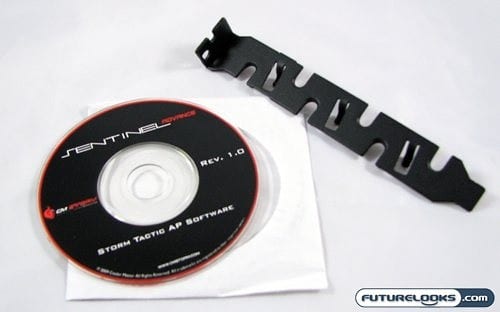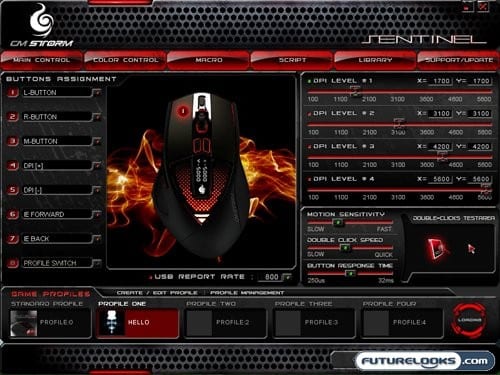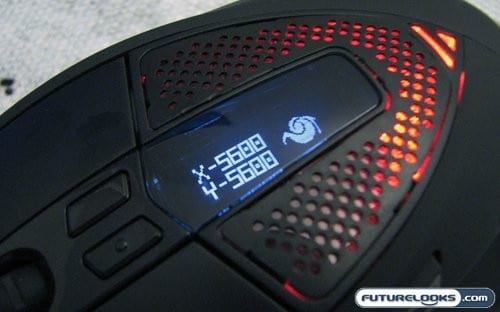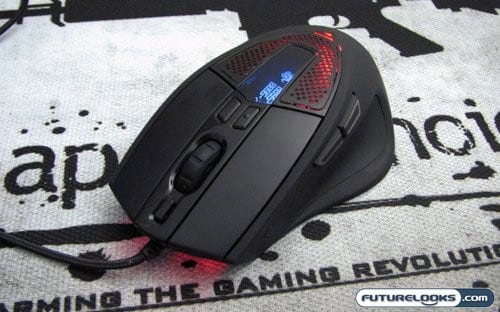Some Included Accessories
The accessory package found with the CM STORM Sentinel Advance gaming mouse is rather light, though one wouldn’t expect a lot of accessories with a mouse.

The total package includes a mini CD containing the drivers and software, and an odd looking card slot bracket. That odd looking bracket is actually called StormGuard™, and is meant to prevent your peripherals from disappearing into the hands of opportunistic scumbag thieves at your local LAN party.
Though the LAN parties I attend are quite safe and have a great track record, there’s always the possibility that someone may try something. This simple little bracket prevents this by allowing to tie and secure the cable of three of your peripherals directly to your case. Last time I checked most computers are still fairly large, and not very easy to sneak out of a well maintained event so hopefully your peripherals will stay put as well.
Lots of Options in One Place

The software included with the Sentinel Advance is much more then a simple control panel, and is actually one of the most feature-filled pieces of kit I’ve seen with a mouse. From the GUI you can adjust DPI settings, change buttons assignments, and create profiles for multiple usage situations, and that’s just in the first tab.
There’s tabs for controlling the LED colours, which can then be applied to a particular profile. You can also program macros and setup scripts. The software then saves these settings to the onboard memory on the mouse, meaning you can take this mouse anywhere and it’ll work as programmed, even without the software installed.
Let’s Light Things Up
Plugging in the Sentinel Advance is like turning on a light switch. The lighting on this mouse is rather impressive, if that’s your thing. Light is projected from both the top mesh and two front mounted lenses. These two zones can be programmed independently, using a feature called Octoshade™, to display 8 shades of colour. These colour combos can then be programmed to the Sentinel-X™ MPU to be used on the fly with corresponding profiles.

The OLED display is another nifty addition to the Sentinel Advance, displayed the exact DPI the mouse is setup with at the time. The display also reads off which profile your are selecting as you scroll through them. You can even program in a custom logo from a 32×32 BMP image, adding a little personal flare to your mouse.
Desktop Performance
Mouse testing is remarkably subjective, since the usage environment and needs can vary widely from user to user. Still I tried to put the Sentinel Advance through it’s paces.
Desktop performance is the most difficult to comment on, as it simply comes down to if the mouse is comfortable enough to use for extended periods of time. For my usage, I found the Sentinel Advance quite easy to use while performing lowly desktop duties. As I mentioned before, the experience was very similar to using my Logitech MX1000. Beyond that I don’t want to comment, as your mileage may vary.
I will however talk at length about gaming on the next page. This is a gaming mouse after all.

